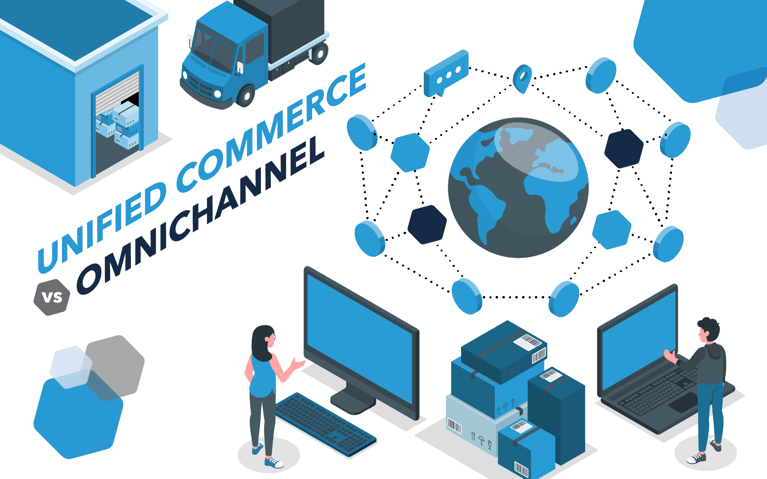This is an excerpt from Cart.com’s newest eBook “Scaling with unified commerce: A step-by-step guide,” an in-depth look at unified commerce, how it compares to other commerce strategies and how to implement a unified commerce strategy. Check out the full eBook here.
Part 1: Understanding unified commerce
Commerce began as the simple trade of goods and services. Although it evolved through the ages, it has undergone rapid transformation over the past two decades. The explosion of population, technology and the number of products and goods available contributed to new consumer behaviors and retail challenges, making it essential to adapt quickly to remain competitive.
The response has redefined approaches to commerce. From multichannel to omnichannel and now unified commerce, the goal is to better meet consumer expectations and demands. And while customer service has always been important, it has taken on new meaning, making it a necessity for brands to address the customer journey and experience.
Introducing unified commerce
Unified commerce is critical part of commerce today. It provides a seamless shopping experience across all channels, whether online or offline, enhancing customer satisfaction and loyalty. It allows retailers to maintain consistent inventory and pricing information throughout various touchpoints, reducing the risk of stockouts and discrepancies. Additionally, with unified commerce, retailers can gather comprehensive data about customer behaviors, enabling them to personalize marketing strategies and optimize their product offerings. Unified commerce empowers retailers to adapt to changing consumer trends and preferences and remain flexible in a fast-paced industry where negative experiences can destroy a brand's bottom line.
The customer experience + unified commerce
The customer experience is more critical than ever: It’s not just about selling products but crafting unforgettable journeys. According to a Wunderman study, 63% of consumers1 say that the best brands exceed expectation across the entire customer journey. That’s from discovery to delivery – and beyond. Technology has made it so that customers expect personalization and a seamless experience at every turn. And when things don't go smoothly, their loyalty ends. A recent survey revealed that over 50% of customers2 left a brand they were loyal to in the last 12 months due to a poor customer experience. That leaves little room for businesses to fumble.
To keep up, brands must use every tool in their toolkit to ensure an immaculate experience consistent across all channels and touchpoints. And that’s where a unified commerce strategy comes into play.
In this eBook:
In this guide, we'll explain unified commerce and how it differs from other methodologies and fits into an omnichannel world. You'll learn the steps to develop and implement a unified commerce strategy for your brand – and the best practices for getting started. You'll also see how to use unified commerce to stay agile, grow and scale.
What is unified commerce?
Unified commerce is a comprehensive and holistic approach to retail, seamlessly integrating all channels and touchpoints to create a cohesive shopping journey for customers. Beyond simply merging online and offline, frontend and backend realms, it aims to deeply understand and improve the customer journey, fostering brand loyalty and retention. By erasing the boundaries between digital and physical platforms, retailers can offer a smoother path from discovery to delivery across diverse channels, prioritizing personalized experiences that elevate satisfaction and drive business growth.
Imagine this: You gather ingredients to bake a pie. You’ve got your flour, sugar, butter, salt, seasonings and fruit. But you don’t put it together. As is, siloed and unprocessed, you can’t eat it – it’s random items that taste much better together. So, when you combine those ingredients and cook them up in the right way, the impact is enormous. You have a favorite dessert that delights.
Unified commerce is much the same. It unifies siloed streams of data and makes it more digestible. It captures both frontend and backend views of the customer, allowing businesses to build a better experience. In essence, it gives brands deep insights into consumer behavior, fueling cohesive experiences across all touchpoints. By consolidating channels and data into a centralized source, or unified commerce platform, businesses can unlock dynamic, customer-centric shopping experiences. This consolidation isn't merely about merging technologies; it's about creating a seamlessly integrated stack that harmonizes disparate systems and amplifies data coherence.
Unified commerce transcends the limitations of traditional omnichannel strategies, serving as the ultimate solution for unifying technologies and forging frictionless customer interactions. By centralizing data, brands gain a panoramic view of the user journey, including interactions with chatbots, order tracking, loyalty programs, point-of-sale systems, emails, websites, apps and more. Armed with this comprehensive understanding, brands can pinpoint areas for improvement, optimizing the customer experience for greater consistency and satisfaction while also eliminating discordant tech stacks and fragmented data. It lets you deliver an integrated, measurable, seamless experience that delights – just like pie.
Unified commerce key concepts

- Unified sales channel data: With a unified commerce platform, data from all sales channels - brand website, brick-and-mortar POS, marketplace channels - is brought together.
- Customer engagement centralization: Unified commerce centralizes all customer engagement data. This includes clicking on ads, viewing emails, adding items to a shopping cart, completing actions in-store, etc.
- Personalization: Insights gained from unified commerce data can be leveraged into a truly personalized experience for every customer. Brands can deliver a customized message or call to action when it's needed most.
- Accuracy and efficiency: Having unified, real-time data in regard to customer engagement and sales means brands can see precisely how inventory is moving. This allows information across channels to be more accurate than ever. Stock information and pricing will be consistent for customers, and brands can predictively move inventory where needed.
What is the difference between unified commerce and…
Quite a few buzzwords are swirling around the topic of ecommerce these days. Some are concrete and easy to spot, and some are more conceptual. Here are the most common ecommerce topics that can be easily confused with Unified Commerce:
Unified commerce vs multichannel commerce
Unified commerce and multichannel commerce are both strategies retailers use to engage with customers across various channels, but they differ in approach and scope.
Multichannel commerce involves selling products or services through multiple channels, such as brick-and-mortar stores, websites, mobile apps, social media platforms and third-party marketplaces. However, these channels often operate independently, with separate inventories, pricing and customer experiences. When switching between channels, customers may encounter inconsistencies in product availability, pricing and promotions.
While multichannel commerce involves operating through multiple channels independently, unified commerce focuses on integrating channels to create a unified and consistent customer experience. Unified commerce goes beyond simply offering products across different platforms; it aims to maximize customer satisfaction, retention and loyalty by providing a seamless shopping journey.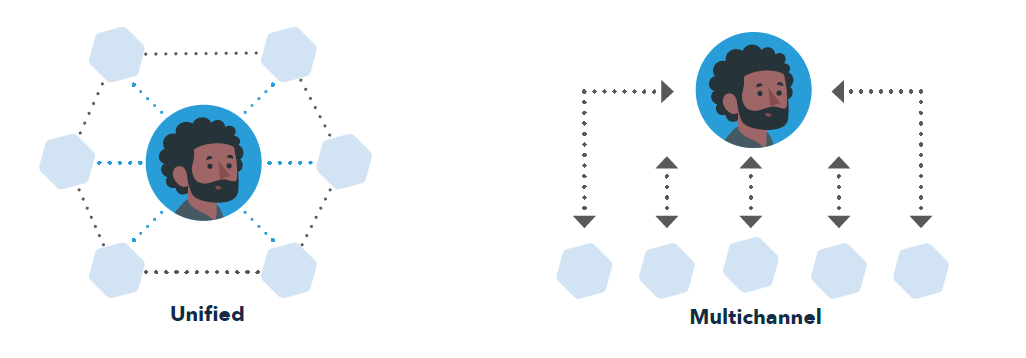
Unified commerce vs headless commerce
Unified commerce and headless commerce are both approaches used in retail to enhance customer experiences, but they differ in their focus and implementation. Headless commerce refers to the technology that separates frontend sales and backend management – it decouples the frontend presentation layer from the backend commerce functionality. In headless commerce, the backend systems responsible for managing inventory, processing orders and handling payments are separated from the frontend user interface. This allows businesses to deliver content and commerce experiences across various digital touchpoints (such as websites, mobile apps and IoT devices) using APIs. Headless commerce provides flexibility and agility, allowing businesses to innovate and adapt quickly to changing customer needs and technological advancements.
In a headless commerce model, the visible front end - for example, the point of sale, website, mobile app, etc. - is separate from the hidden backend - like CRMs, content management systems and order management systems. The connective APIs allow brands to easily switch vendors and platforms with little to no disruption.
When compared to headless commerce, unified commerce focuses on providing a seamless and consistent customer experience across all channels while headless commerce focuses on the technical architecture and flexibility of delivering commerce experiences through APIs and decoupled systems. Unified commerce encompasses both frontend and backend aspects of retail, while headless commerce primarily addresses the backend infrastructure and content delivery mechanisms.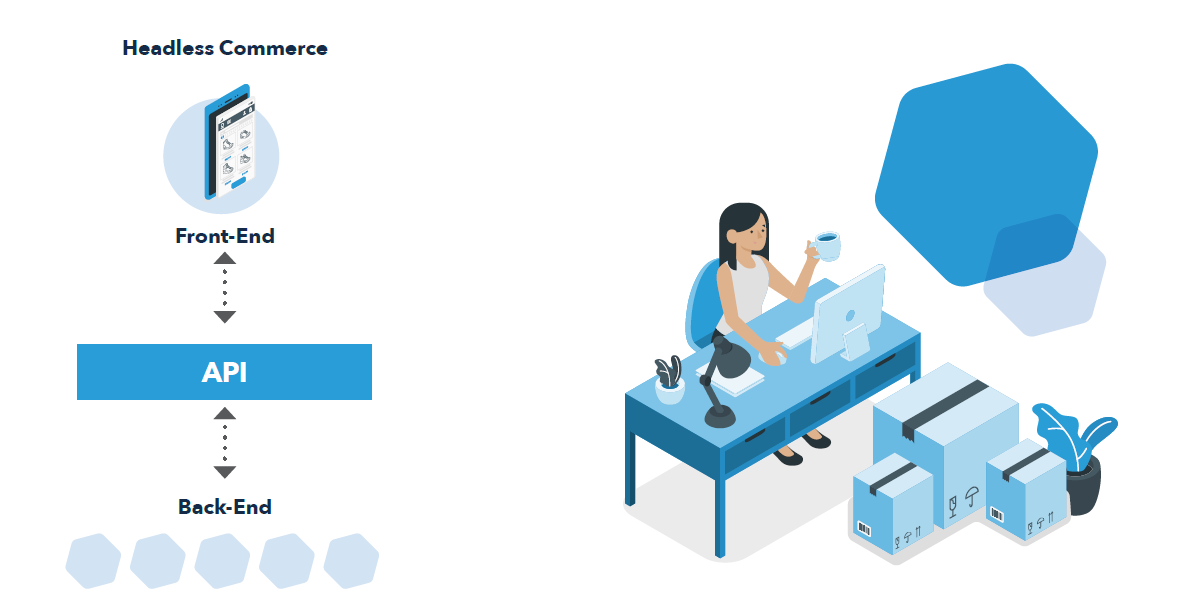
Unified commerce vs composable commerce
Composable commerce is a broader concept than headless commerce and encompasses the idea of assembling commerce capabilities from individual, interchangeable components or services. It involves breaking down commerce functionalities into modular building blocks, which can be combined and orchestrated to create tailored commerce experiences. Composable commerce emphasizes flexibility, scalability and customization, allowing businesses to adapt their technology stack to evolving business requirements.
While headless commerce focuses primarily on separating the frontend from the backend to enable flexibility in content delivery, composable commerce extends this concept to the entire commerce stack, emphasizing modularity and the ability to compose commerce capabilities from interchangeable components. Essentially, headless commerce is a specific architectural approach, while composable commerce is a broader philosophy encompassing modularity and flexibility across the entire commerce ecosystem. Compared to unified commerce, composable commerce emphasizes modular flexibility and customization in building commerce capabilities. In contrast, unified commerce focuses on integrating channels and touchpoints to provide a consistent and seamless shopping journey for customers.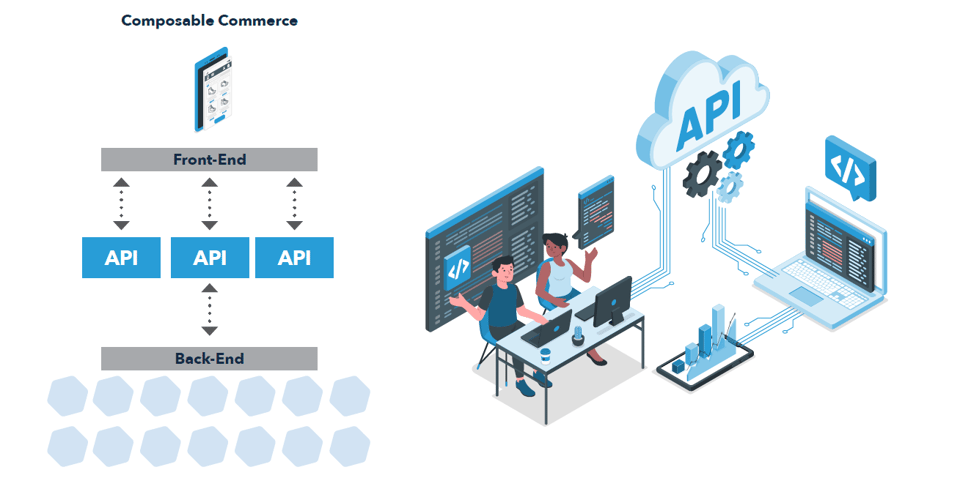
Unified commerce vs omnichannel commerce
Omnichannel commerce refers to an integrated retail approach that gives customers a more unified shopping experience across multiple channels, including online platforms, physical stores and mobile devices. It emphasizes consistency and continuity throughout the customer journey, allowing individuals to transition effortlessly between different touchpoints. By leveraging technology and data analytics, omnichannel commerce enables retailers to track customer interactions, preferences and behaviors across channels, personalize the shopping experience and drive customer satisfaction and loyalty. Ultimately, omnichannel commerce aims to break down silos between online and offline channels, creating a cohesive and interconnected ecosystem that enhances engagement and drives business growth.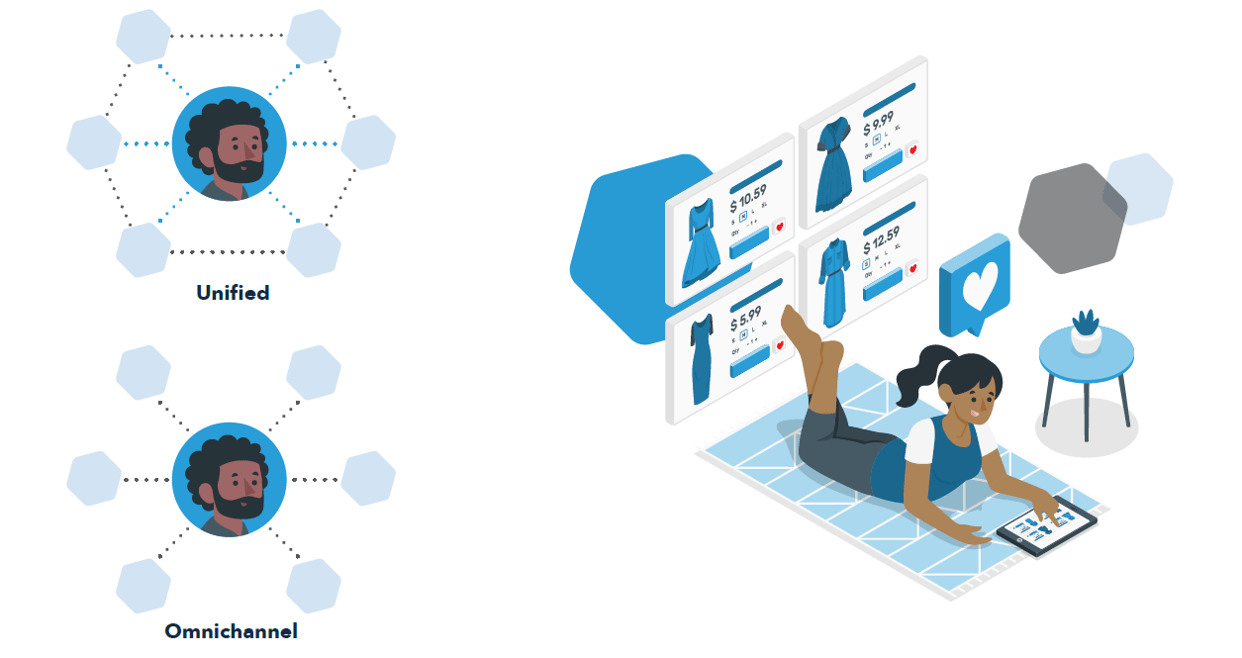
Unified commerce aims to eliminate the barriers in omnichannel retail by breaking down data silos and enhancing data quality. It focuses on improving analytics across various channels to accurately track customer journeys. This strategy creates a single, real-time source of truth, offering retailers better visibility and insight into customer behavior. By adopting a unified commerce architecture, brands can fulfill the promise of omnichannel retail more efficiently, delivering relevant shopping experiences, enabling self-service and offering flexible fulfillment options. This approach not only meets evolving consumer expectations but also drives growth and provides a competitive edge in the market.
Once you understand unified commerce, it’s crucial to understand its benefits and explore how you can leverage it. It’s also important to develop your unified commerce strategy and goals and create actionable steps toward implementing a unified commerce approach.
Want to learn more? Check out the rest of our eBook about unified commerce – along with strategies and best practices to implement and scale with a unified commerce approach.
Subscribe to our emails for the latest industry insights!
By entering your email, you agree to receive marketing emails from Cart.com







